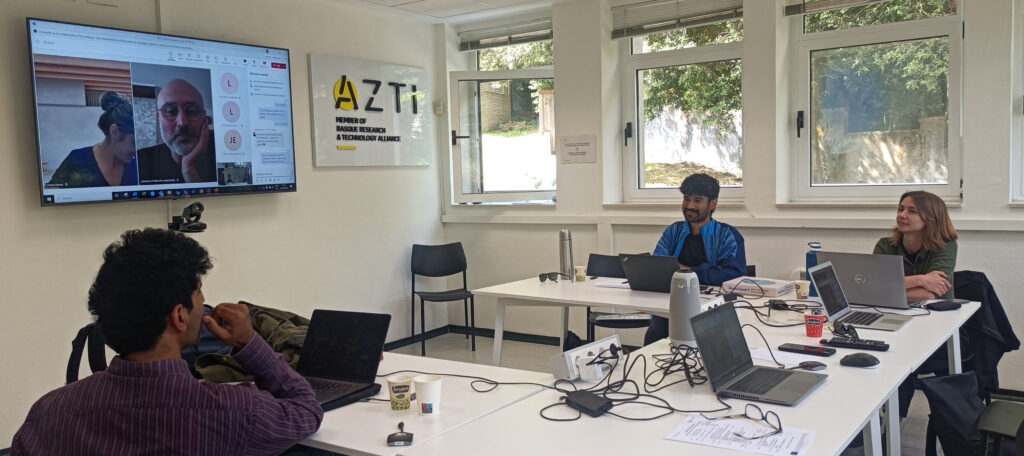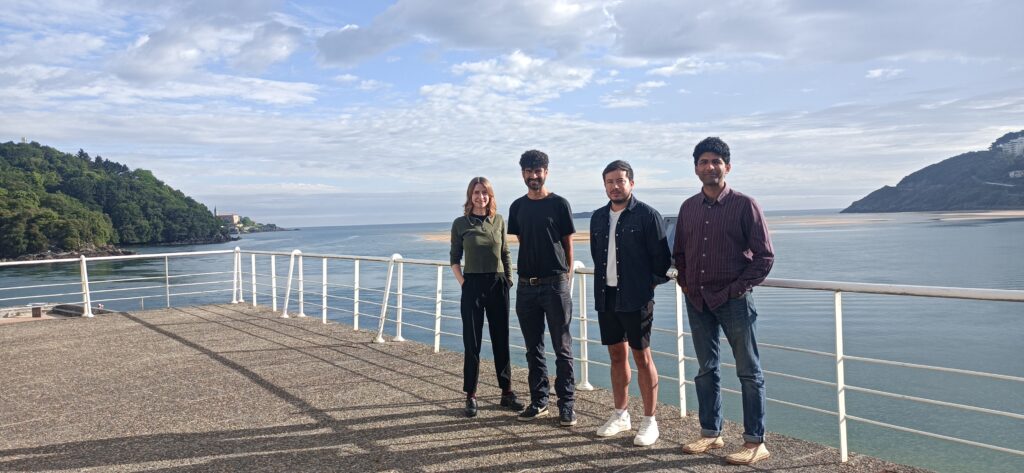BIOcean5D’s 6th work package (WP6) explores innovative strategies to assess the values and rights of marine ecosystems, ultimately seeking to inform and improve protective strategies.
With some WP6 tasks reaching pivotal moments, we held a scientific workshop to discuss preliminary results and understand how they contribute to our overall aims. The workshop was held with several WP6 team members in Sukarrieta, Spain, on 14 June 2024.
We caught up with WP6 co-lead Arantza Murillas, AZTI, to find out more.
What was the aim of the workshop?
We planned to revise the key outputs that we’ve already generated through WP6, and to orient them into the economic valuation of marine ecosystems.
What were you hoping to achieve?
By combining theoretical, applied and policy-oriented approaches, we’re going deeper into understanding biodiversity functions and processes. Multidisciplinary analysis is needed to understand the value of biodiversity – and this is precisely what the workshop offered.
We started with a theoretical approach to revising biodiversity value from a functional perspective. [Linked to the work of WP6 co-lead Sacha Bourgeois-Gironde, which includes updating Weitzman’s biodiversity index.] We followed with presentations on a set of pilot studies that use two different techniques for the monetary valuations of marine biodiversity: (i) Deliberative Monetary Valuation and (ii) Natural Capital Accounting.
 WP6 team members in Sukarrieta, Spain, on 14 June 2024.
WP6 team members in Sukarrieta, Spain, on 14 June 2024.
Tell us more about the two strategies explored in WP6 – Deliberative Monetary Valuation and Natural Capital Accounting.
The value of marine biodiversity should be considered from a multidisciplinary perspective, merging economic valuation with social valuation, or public attitude. We’re using these two complementary methodologies to engage citizens’ views of biodiversity, and understand how they value marine ecosystem functions.
These strategies contribute to giving us a “dividend”, or the monetary contribution of marine biodiversity, that we hope policymakers will consider as an additional element in their decision-making processes.
Next, we will summarise our progress. We aim to produce a concise description that could, for example, be used in any future policy briefings.
 Eva Wanek, Gilles Jean-Louis, Julian Esteban-Cantillo and Umer Gurchani at the WP6 workshop. Credit: Arantza Murillas
Eva Wanek, Gilles Jean-Louis, Julian Esteban-Cantillo and Umer Gurchani at the WP6 workshop. Credit: Arantza Murillas
What was your highlight of the event?
The workshop highlighted the necessity of introducing these types of monetary valuations to the agenda of policymakers and other stakeholders. Direct measurements of ecology and biology aren’t enough to protect natural capital. While the level of information we have for economic and social values might be a long way from that of biological measurements, they are just as convincing and necessary to help protect biodiversity.